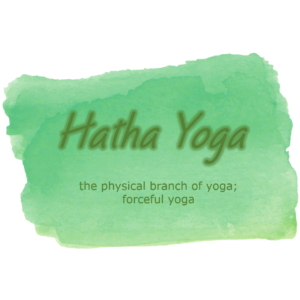 Hatha Yoga is the branch of physical yoga. The practice of Hatha Yoga brings about steady posture, health, and lightness of the body, dealing with the physical aspects of the body. Hatha Yoga is the most familiar yoga practice in the West. It is described in the classical text Hatha Yoga Pradipika, written by Svatmarama in the 15th century CE. The text describes asanas (postures), purifying practices, mudras (finger and hand positions), bandhas (energetic locks), and pranayama (breathing practices). Today, Hatha Yoga is considered a combination of four things: asana, pranayama, meditation, and relaxation.
Hatha Yoga is the branch of physical yoga. The practice of Hatha Yoga brings about steady posture, health, and lightness of the body, dealing with the physical aspects of the body. Hatha Yoga is the most familiar yoga practice in the West. It is described in the classical text Hatha Yoga Pradipika, written by Svatmarama in the 15th century CE. The text describes asanas (postures), purifying practices, mudras (finger and hand positions), bandhas (energetic locks), and pranayama (breathing practices). Today, Hatha Yoga is considered a combination of four things: asana, pranayama, meditation, and relaxation.
The practice of yoga often begins with Hatha Yoga because the body can be a great obstacle on the path to attaining peace of mind and ultimate realization of our true nature (samadhi)—that we are all one. Hatha Yoga heals and opens the body and cleanses the nervous system so that the higher limbs of yoga—withdrawal of senses, concentration, and meditation—occur without effort. For many, Hatha Yoga is the foundation upon which the yoga practice is built.
The word hatha means, literally, sun (ha) and moon (tha). It is the balance of opposing energies—positive and negative, soft and hard, cold and hot, receiving and giving, female and male. Asana and the accompanying pranayama make up the Hatha Yoga practice, helping to balance and unite these opposite energies within us. Hatha Yoga practice is not about attaining a perfect posture but, rather, is about finding steadiness and ease (sthira and sukha) while in the posture. This is achieved using correct breath, bandhas, and gaze (dristhi).
Hatha Yoga is an umbrella term under which all the different styles of yoga as we know them (hot yoga, ashtanga yoga, hatha yoga, restorative yoga, etc.) are found. All of these styles of yoga incorporate asana and pranayama into the practice in different ways, hence the different styles.
